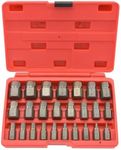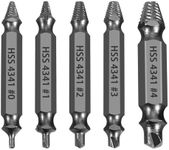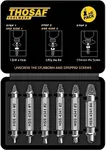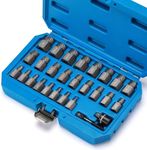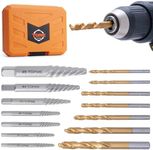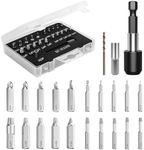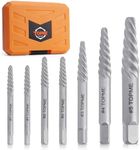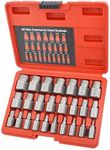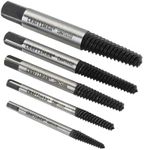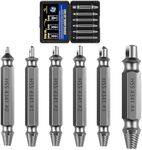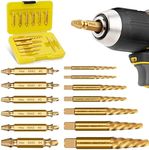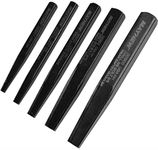Buying Guide for the Best Screw Extractors
Choosing the right screw extractor is important when you need to remove damaged, stripped, or broken screws. The right tool can make the job much easier and prevent further damage to your workpiece. When shopping for a screw extractor, it's helpful to understand the key features and specifications that affect performance and usability. By considering these aspects, you can select a tool that matches your needs and ensures a smoother extraction process.Extractor TypeScrew extractors come in different types, such as spiral fluted, straight fluted, and multi-spline. Spiral fluted extractors are twisted and bite into the screw as you turn them, making them good for most general uses. Straight fluted extractors are less likely to expand the screw and are better for delicate jobs or softer materials. Multi-spline extractors offer a strong grip for tougher jobs. To choose the right type, think about the kind of screws you usually work with and the material they’re in. For most home and DIY tasks, spiral fluted extractors are a versatile choice, while professionals or those working with specialty materials might prefer straight or multi-spline options.
Size RangeThe size range refers to the variety of screw sizes that the extractor set can handle. Some sets are designed for small screws, while others can tackle larger bolts. The size range is important because using the wrong size extractor can damage both the tool and the screw. Sets with a wide range of sizes are more versatile and can handle different jobs. To pick the right size range, consider the types of screws you most often encounter. If you work on electronics or small appliances, a set for smaller screws is best. For automotive or construction work, look for a set that includes larger extractors.
Material and Build QualityScrew extractors are usually made from hardened steel or high-speed steel, which affects their strength and durability. Higher quality materials resist bending and breaking, especially when dealing with tough or rusted screws. Build quality also includes the finish, which can help prevent rust and wear. If you plan to use the extractor frequently or on tough jobs, look for tools made from high-speed steel or with a corrosion-resistant coating. For occasional use, standard hardened steel may be sufficient.
Ease of UseSome extractors are designed to be used with hand tools like wrenches, while others can be used with power drills. Features like a hex shank make it easier to use the extractor with a drill, speeding up the process. Ease of use also includes how clearly the sizes are marked and whether the set comes with a storage case. If you prefer quick and simple operation, look for extractors compatible with your existing tools and with clear markings. If you’re new to using extractors, a set with instructions or guides can be helpful.
Included AccessoriesSome screw extractor sets come with additional accessories, such as drill bits for making starter holes, storage cases, or guides. These extras can make the extraction process easier and more organized. If you don’t already have compatible drill bits or want a convenient storage solution, look for sets that include these accessories. For those who already have a well-equipped toolbox, a basic set may be all you need.

